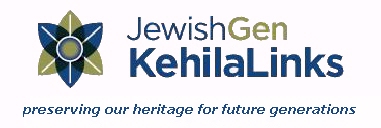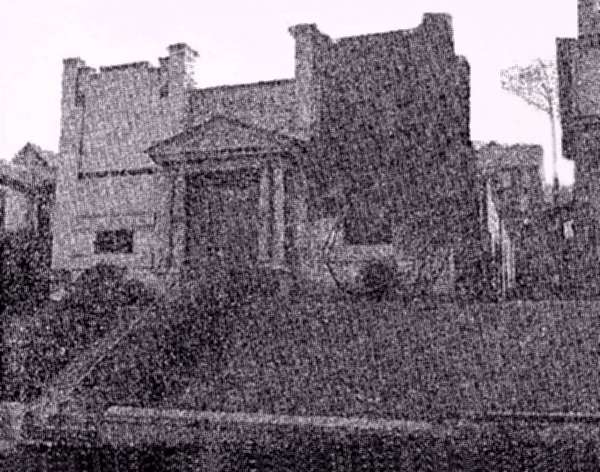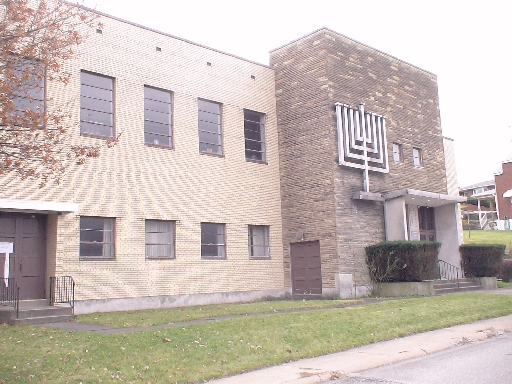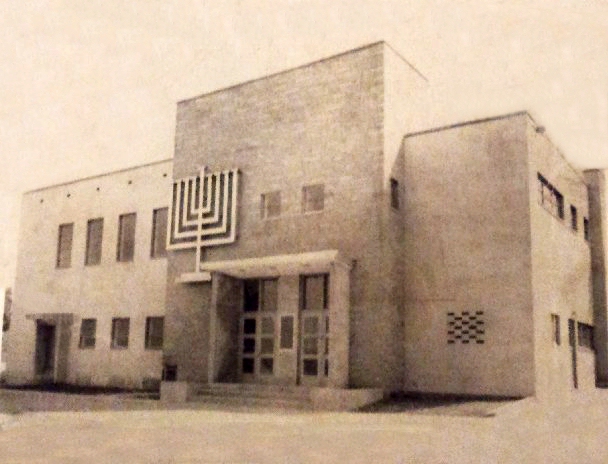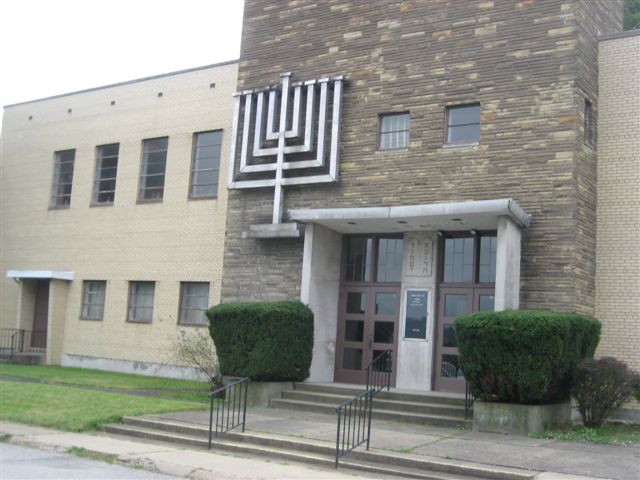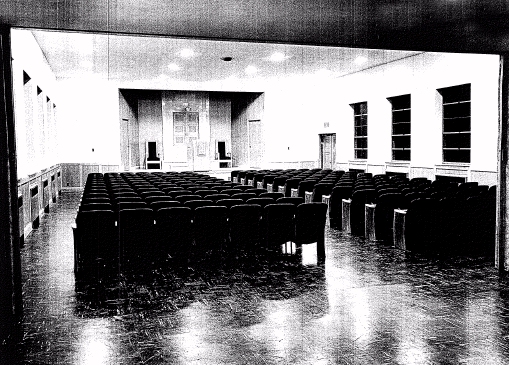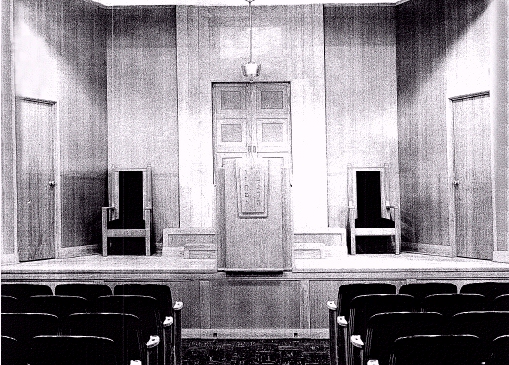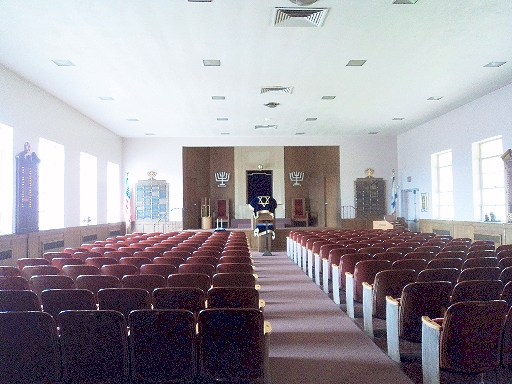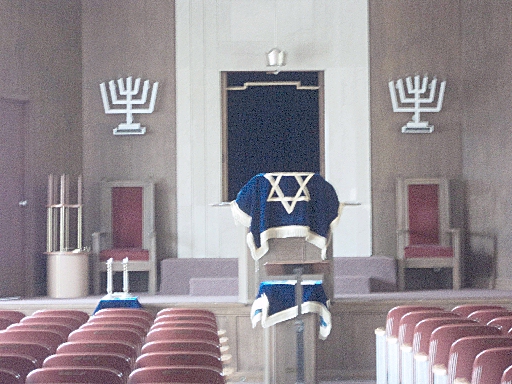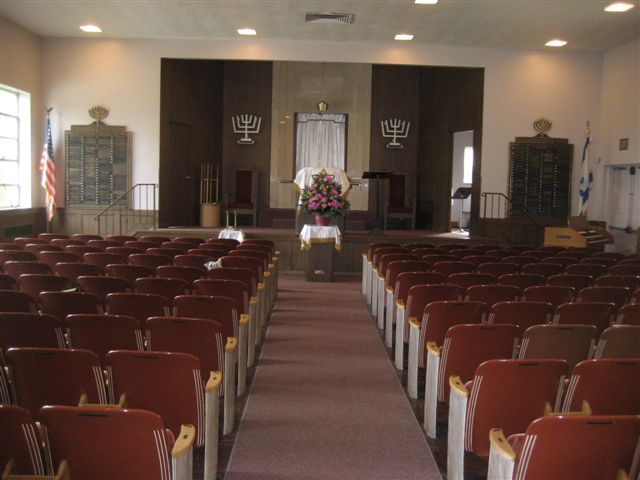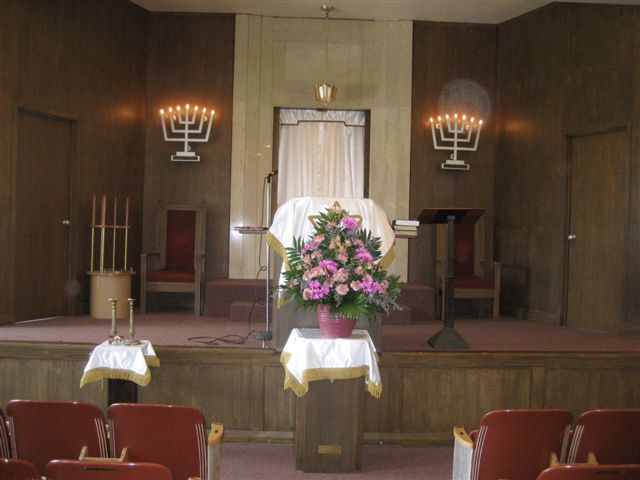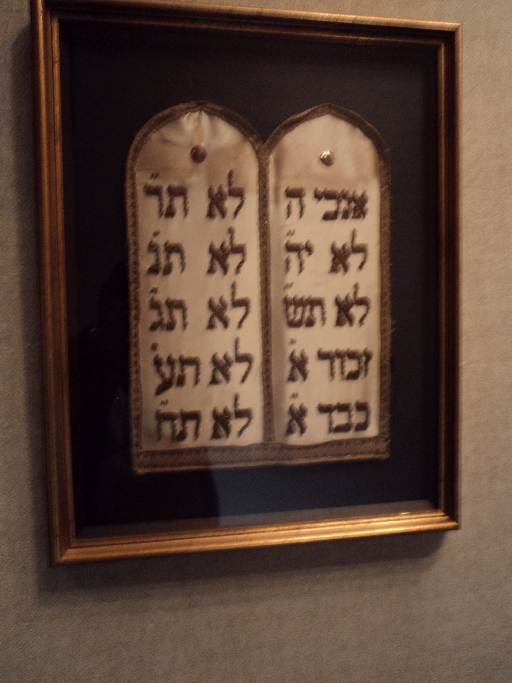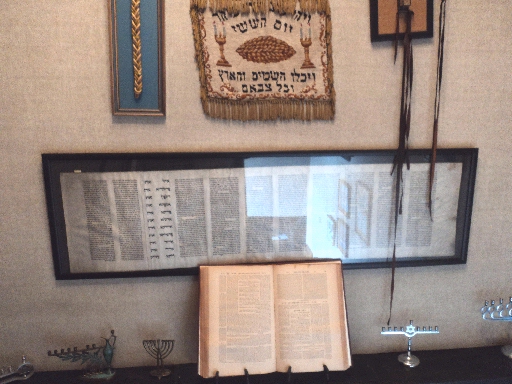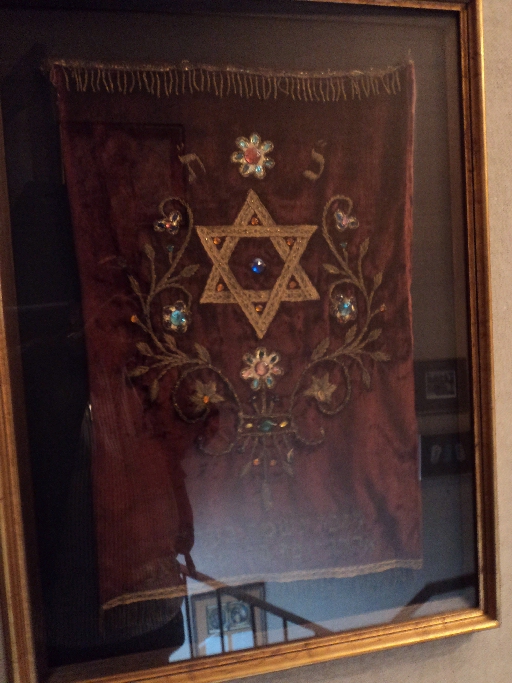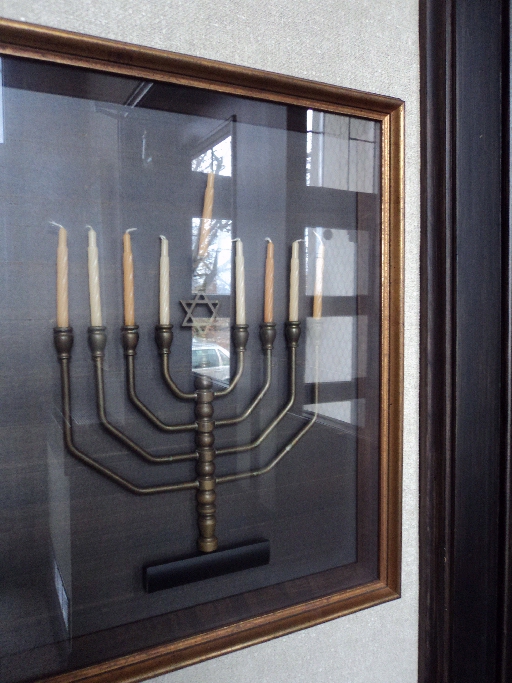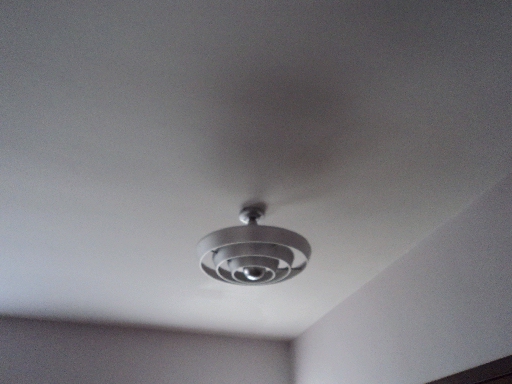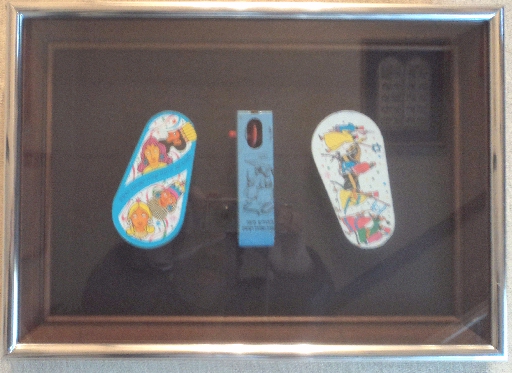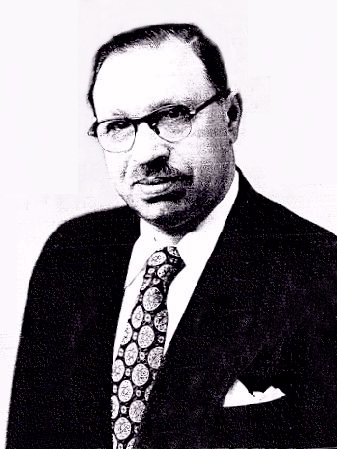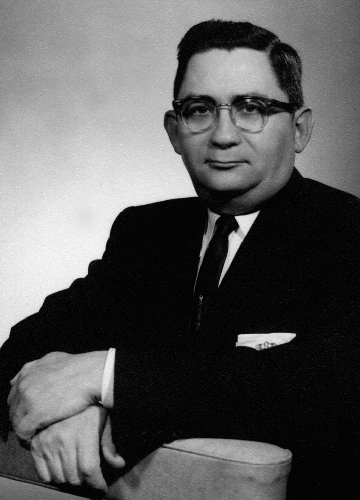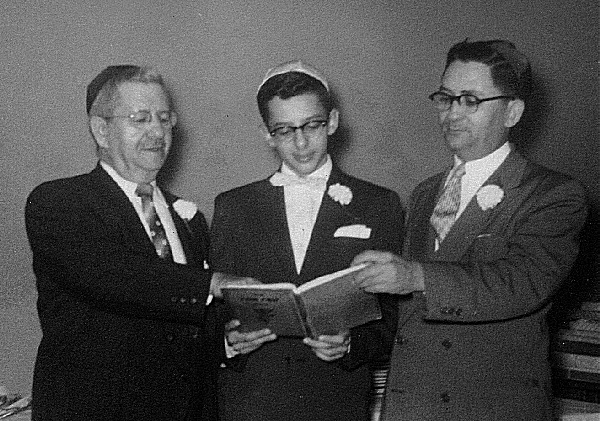|
| Monessen Religious |
|
[ click image to enlarge it. ]
|
Monessen, over time, had a Conservative (later Reformed) congregation and a mohel (one who performs circumcisions). A Kosher butcher was located in nearby Uniontown, Pennsylvania and a shochet (religious slaughterer) was located in nearby Donora, Pennsylvania.
|
In addition, there were Junior congregations, Sunday schools, weekly Cheder (Religious school) lessons, B'nai B'rith mens' organization, Ladies' Auxiliary and Sisterhoods and AZA/BBG youth organizations.
|
|
~ Jewish Community History ~
|
The first record of Jewish arrivals in Monessen is found in 1898, when three Jewish families moved here. The names mentioned are Abram NAYHOUSE, Emanuel FELDMAN and Max KRAUSE.
|
In 1900, running true to form and maintaining the tradition of the "Jewish heart" that always beats in sympathy with the unfortunate, one of the first acts of the Jews of Monessen—when they were established in any number—was to create a Ladies' Aid Society. This is characteristic of the Jew and has always won the admiration and respect of even the most prejudiced against our people. The Jews take care of their own is a truth that bears repeating. So naturally, the very first duty that fell to the lot of the Monessen Jews was to look after the sick and needy—only two years after the first Jews moved here. In 1919, the officers of the society that performed most faithfully the obligations that rested upon them were Mrs. Henry LEBOWITZ (President), Mrs. Henry Cramer (Vice-President), Mrs. Abram NAYHOUSE (Secretary) and Mrs. Max Shapiro (Treasurer). Meetings were held every other Sunday and a great interest was taken by all of the members in the work of the organization.
|
On 30 October 1901, the NAYHOUSE family had the honor of giving birth to the first Jewish boy in Monessen, named Jesse.
|
By 1903, the following families had settled in Monessen: Jacob BERENSTEIN, Emanuel FELDMAN, GOLDBERG, Max JANAWITZ, Morris JANAWITZ, LEIBOWITZ, LEVY brothers, LOEB, Abram NAYHOUSE, MEYERS, MONSBACH, M. ROSNER, Joseph SAMUELS, Alfred TANZER and Albert WEISS. At this time, there was no synagogue, but occasional services were held in the homes of the early settlers. In the fall of this year, a committee was formed, comprised of Max JANOWITZ, Alfred TANZER and Abram NAYHOUSE for the purpose of conductiong a High Holiday worship service in Kelly's Hall on Doner avenue. Another committee was formed later for the purpose of organizing a congregation. Max JANOWITZ became the first president and Alfred TANZER the first secretary-treasurer of the unincorporated congregation.
|
In the fall of 1904, for the High Holiday services, they engaged Mr. Miller, from Pittsburgh and a layman, well learned in Jewish lore and an excellent Baal Tephillah (Cantor, reader of prayers on special occasions). He conducted the religious services for the Monessen Jewish residents until 1907.
|
In early 1907, a meeting took place and Aaron GOLDBERG was elected the first official president. Later, a serious attempt was made to organize and a congregation was formed. The officers used every available means to raise money in order to erect a permanent synagogue. The first great money raising project was launched when Dr. Leonard R. LEVY, Rabbi of the Rodef Sholem Synagogue in Pittsburgh was invited to address the Monessen Jewish community at the opera house. Dr. LEVY, in those days, was the outstanding personality of the Reform Rabbinate. He was so impressed with the the spirit of the religious zeal that drove the first officers of the congregation to build a House of Worship, that he came to the community gratis, presenting his usual fee of $300. dollars to the committee as a token of reverence for a worthy cause. The committee cleared a profit of $500. dollars which was used toward the the building of the projected synagogue. By this time, the Jewish population of Monessen had risen to about seventeen families.
|
On 5 February 1908, the charter members of the congregation and to whom great credit is due for being responsible for the development of the organized religious life of the Monessen Jewish community and for being alive to the need for such an organization—to promote the faith of Israel—are S. H. COHEN, Emanuel FELDMAN, Aaron GOLDBERG, David GOODMAN, Jacob HARRIS, Max JANOWITZ, Henry LEBOWITZ, Abram NAYHOUSE, Meyer MEYERS, Morris ROSNER, Joseph SAMUELS, Max SHAPIRO, Abe TANZER and Albert WEISS. They petitioned the Commonwealth of Pennsylvania, in the County of Westmoreland, to establish and erect a synagogue, according to the faith of Israel. The petition was granted on 25 February 1908 and recorded on 23 March 1908. The official name born by the congregation was "Kneseth Israel Hebrew Congregaton," although later, it became known as the "Kneseth Israel Congregaton."
|
As a result of the energetic efforts on the part of the Jewish community leaders, a synagogue was procured. It was a strong force and a real inspiration in the spiritual life of the Monessen Jewish community.
|
The first rabbi was Rabbi H. LEVENDORF who later moved to the New Kensington congregation and he was succeeded by Rabbi David MEYERS. These men deserve recognition for having been responsible for the development of the organized religious life of the Monessen Jewish community and for being alive to the need for such an organization—to promote the faith of Israel.
|
Rabbi MEYERS was an aggressive leader and had a deep interest in all the communal affairs. Realizing that the future of Judaism and of Jewry lies in the hands of the younger generation, Rabbi Meyer established and directed a Sabbath School for eighty children—Edward CRAMER was Principal and Joseph SAIFER was Superintendent. The competent corps of teachers were Misses Edith TANZER, Rose CRAMER, Elsie JANOWITZ, Freda SHAPIRO and Jessie NAYHOUSE. The Sabbath School was considered as the most important phase of the religious life of the community and very properly so.
|
In 1919, the officers of the congregation were H. ISENBERG (President), Max SHAPIRO (Vice-President), Myer MILLER (Secretary) and Abram NAYHOUSE (Treasurer).
|
|
~ Other Religious Activities ~
|
Monessen had a very respectable number of Jewish organizations for a community of its the size and it shows, members the Monessen Jewish community were awake to their duty and are commended for their enterprise. In reading about the following organizations, we are struck with the significance of the statement that is so often made, "the responsibility for the work of the different Jewish organizations in every community always rests upon a handful of dedicated men and women." If one observes the members mentioned in the following Monessen organizations, one must be impressed with the truth of that statement.
|
The B'nai B'rith, established many years ago, was always an active force in the Monessen community. At the time of the establishment of the lodge a committee came from Pittsburgh and at a meeting held at the Standard Club, the organization was brought into being. It measured up with other lodges of similar size. Joseph ROSENBAUM was its first president and was always an active worker in the Order and has taken a deep interest in its progress. The other officers were Ben DAVIS (Vice-President), J. TREELISKY (Secretary) and Henry SINAY (Treasurer). The lodge had a membership of 60 members who have done other work of a wider community value beyond that which applies strictly to B'nai B'rith. All the good it has done has squared with its motto, "Benevolence, Brotherly Love and Harmony."
|
In 1909, a B'nai B'rith Lodge was established by Monessen's Jewry to live up to the principles of the Order of which it is a link, namely "Benevolence, Brotherly Love and Harmony." In fact, it was the organization that functioned as the charitable distributing agency in the community and took an active part in all Jewish affairs. In the larger sphere of work of the Order, it always made its influence felt. The officers of the Monessen B'nai B'rith Lodge were Henry LEBOWITZ (President), I. BERKIN (Vice-President), Meyer MILLER (Secretary) and Max SHAPIRO (Treasurer).
|
When we come to mention the next organization of this progressive community, we hesitate for a moment, for it seems to us scarcely possible that in any community there should exist a Young Women's Hebrew Association without a Young Men's Hebrew Association, but that is the condition in Monessen. The young Jewish women, realizing that they had a field in which to use their influence for good, banded together and formed a Young Women's Hebrew Association. It shows that the young women have caught the spirit of the New Era and intend to assert themselves. Its functions are, of course, those usually associated with such an organization "moral, educational and social." The officers were Miss Sophie KAHN (President); Miss Elsie JANOWITZ (Vice-President), Miss Edith HANSLER (Secretary) and Miss Minerva COHEN (Treasurer). The Board of Directors were Miss JANONITZ, Rose CRAMER, Edith TANZER, Helen MOSKOWITZ and Ida IKEN and the initial membership numbered 35.
|
Another organization formed in Monessen was Zionist. It began under the most favorable auspices and the widest interest was shown in its development. To show that the society is in earnest in its aims and purposes, after its inception it raised two thousand dollars for the Palestinian Restoration Fund and it is keeping in close touch with the national and international work of the organization. There was a strong campaign under way to largely augment the membership because of developments in the Far East and the possibility of the realizations of at least a portion of their aims the Zionists are becoming more and more enthused and interested in their movement in the city. The officers were Mr. A. TANZER (President), Mrs. Henry Cramer (Vice-President), Miss Rose KRAMER (Secretary) and H. CHERKIN (Treasurer). The younger folk also took a keen interest in Zionist work, evidenced by the fact that a junior Zionist organization was been formed, known as the "Young Judean," and at its inception numbered 45 members.
|
We cannot close without referring to the spirit of Monessen Jewry, which was long lasting, due to the type of men and women who were its leaders and of course, the members of the Jewish community.
|
Sources (portions):
The Jewish Criterion - 23 May 1919 |
|
|
~ Past Presidents and Officers ~
|
[ click image to enlarge it. ]
|
Congregation officers
1945
Photo: Courtesy of Donna COWAN, USA
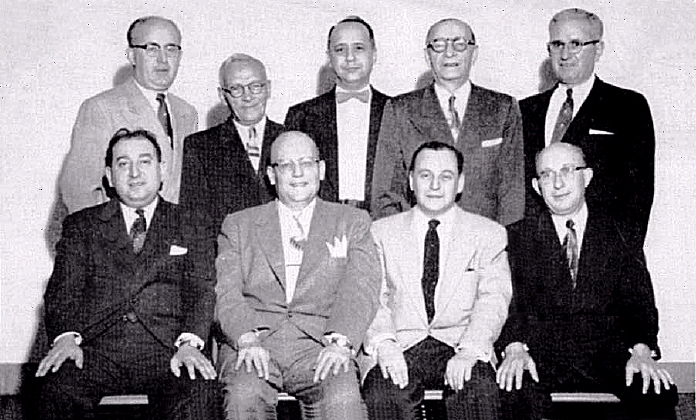 |
Seated, left to right: Herman ALBERT (Vice-president), Harold KRAMER (President), John HOFFMAN (Secretary) and Isidor BERGSTEIN (Treasurer)
Standing, left to right: Trustees Adolph BERGSTEIN, Abe CHERKIN, Dr. Ralph CHERKIN, Meyer ROGOWITZ and Herman GREENSTEIN |
|
|
Congregation sisterhood
1945
Photo: Courtesy of Donna COWAN, USA
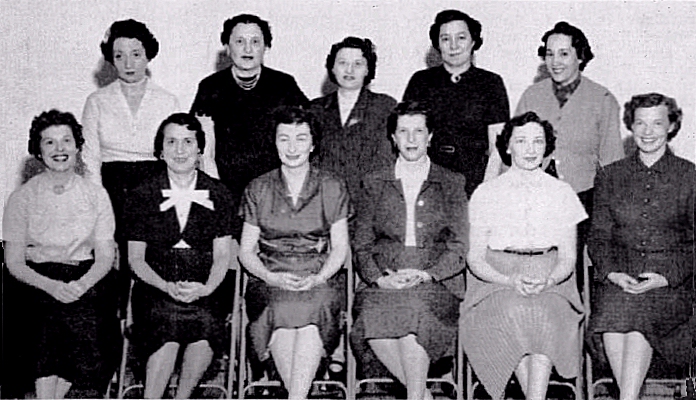 |
Seated, left to right: Mrs. Ted KRAUSE (Financial secretary), Mrs. Edward BERKOWITZ (Treasurer), Mrs. Milton ROSENSON (Recording secretary), Mrs. William SCHWARTZ (President), Mrs. David SLOAN (Vice-president) and Mrs. Herbert KRAUS (Corresponding secretary)
Standing, left to right: Past-presidents Mrs. Max HATTER, Mrs. Sam D. STERN, Mrs. Morris EPSTEIN, Mrs. Bernard SAMUELS and Mrs. Ralph CHERKIN
Not pictured are Mrs. Harold CHERKIN and Mrs. Joseph SAMUELS (Honorary past-president) |
|
|
|
|
[ click image to enlarge it. ]
|
Past Presidents
1954
Photo: Courtesy of Jack BERGSTEIN, USA
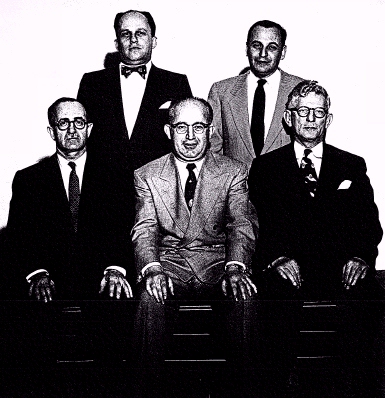 |
Seated, left to right: Dr. Max HEATTER, Adolph BERGSTEIN and Charles ROSENSON
Standing, left to right: Dave WEISS and John HOFFMAN |
|
|
Congregation officers
1954
Photo: Courtesy of Jack BERGSTEIN, USA
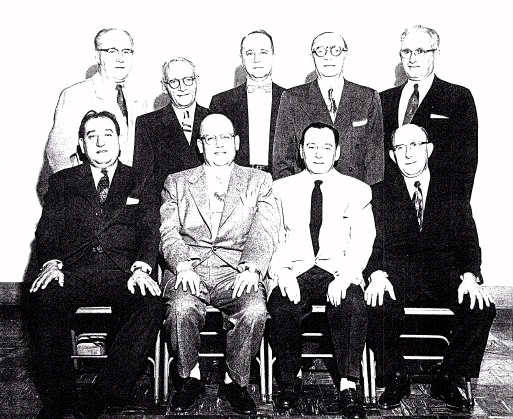 |
Seated, left to right: Herman ALBERT, Harold CRAMER, John HOFFMAN and Isadore BERGSTEIN
Standing, left to right: Adolph BERGSTEIN, Abe CHERKIN, Dr. Ralph CHERKIN, Myer ROGOWITZ and Herman GREENSTEIN |
|
|
|
|
[ click image to enlarge it. ]
|
Sisterhood board members
1954
Photo: Courtesy of Jack BERGSTEIN, USA
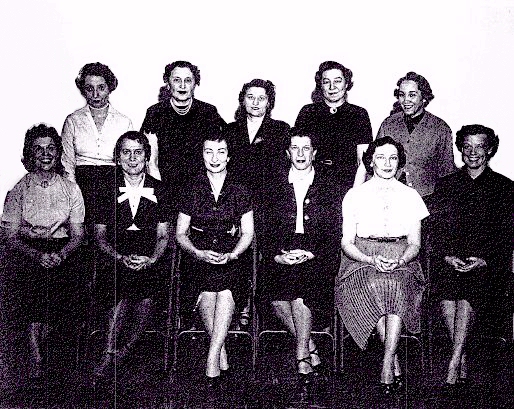 |
Seated, left to right: Fern KRAUSE, Marian BERKOWITZ, Janet ROSENSON, Charlotte SCHWARTZ, Helen SLOAN and Sylvia KRAUSE
Standing, left to right: Helen HEATTER, Hilda STERN, Ruth EPSTEIN, Amelea SAMUELS and Ruth CHERKIN |
|
|
|
|
~ Monessen Religious Schools ~
|
[ click image to enlarge it. ]
|
Confirmation class I
1945
Photo: Courtesy of Jack BERGSTEIN, USA
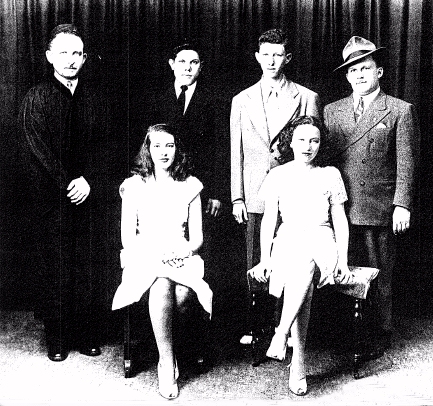 |
Seated, left to right: Rae Claire ROTH and Florence MOSS
Standing, left to right: Rabbi Nathan Ludwig COHEN, Daniel Stern, Alan Greenfield and David Weiss (Confirmation teacher) |
|
|
Confirmation class II
1963
Photo: Courtesy of Jack BERGSTEIN, USA
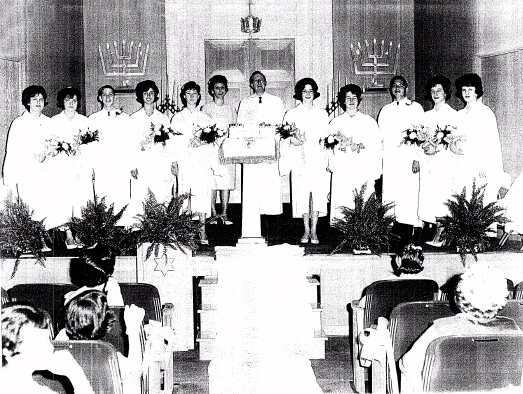 |
| Left to right: Gail HOFFMAN, Beverly PAVLOFF, Ronnie WILEN, Wilma KRASIK, Pam STUHL, Rosalie KRASIK (Confirmation Teacher), Rabbi Maurice KIRSCHENBAUM, Marsha WEISS, Arlene SCHWARTZ, Rodney GOLDBERG, Andrea SCHWARTZ and Janis WEISS |
|
|
|
|
Confirmation class III
c. 1969
Photo: Courtesy of Jack BERGSTEIN, USA
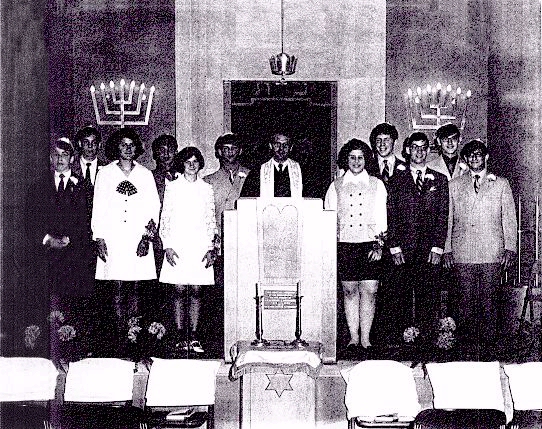 |
Front row, left to right: Bruce POSNER, Marcia POSNER, unknown, Rabbi Robert ALPER, Terry MAYER, Don FEINBERG and Gary CAPLAN
Second row, left to right: Jeff COHEN, Steve SIEGEL, Brad CHERKIN, Howard WEISS and Jeff STERN |
If you can identify anyone above,
click HERE to contact me. |
|
|
Confirmation class IV
c. unknown
Photo: Courtesy of Jack BERGSTEIN, USA
 |
| Left to right: Janie SNYDER, Gayle ROSENSON, Gail HOFFMAN, Jeff Tuckfelt, Rabbi unknown, Ricky LIEBER, Bobby LIEBER, unknown and unknown |
If you can identify anyone above,
click HERE to contact me. |
|
|
|
|
Sunday school teachers
1954
Photo: Courtesy of Jack BERGSTEIN, USA
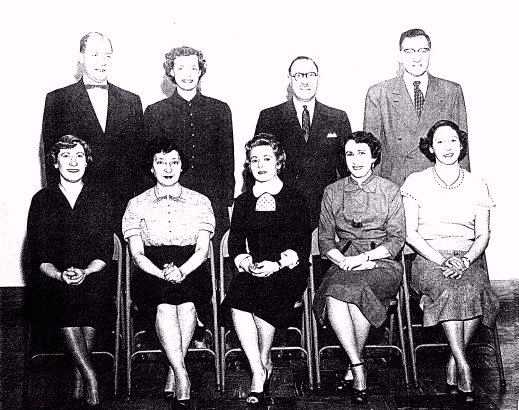 |
Seated, left to right: Dorothy ZAKUTO, Miriam FRIEDLAND, Sylvia CRAMER, Ruth ALBERT and Roslie KRASIK
Standing, left to right: Herb KRAUSE, Sylvia KRAUSE, Rabbi Samuel ZAKUTO and Dave Sloan |
|
|
Student choir
1943
Photo: Courtesy of Jack BERGSTEIN, USA
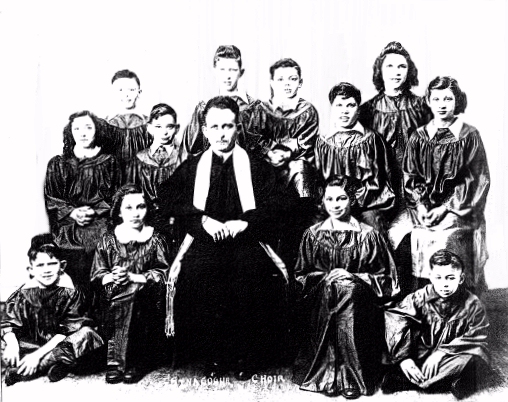 |
| Some of those seated around Rabbi Nathan Ludwig COHEN are unknown BOOHER, Stanton FARBER, Dan STERN, Geri SPEVOCK, Alan GREENFIELD,
Elliot KULICK and Rhea ZWAIL |
If you can identify anyone above,
click HERE to contact me. |
|
|
|
|

